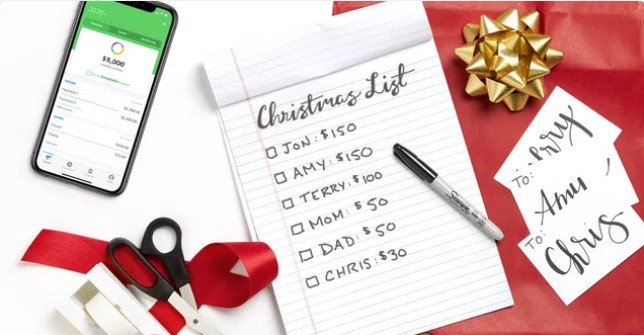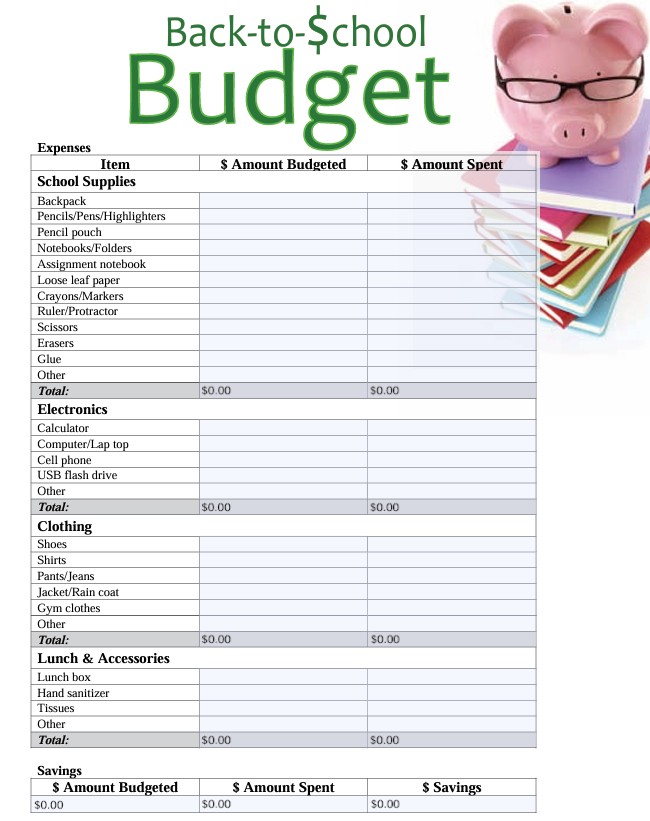Everyone needs a budget and a plan, whether you’re a student or deep into your career. Ignoring it leads to late fees, missed savings, and confusion about where your paycheck went. Small habits, like tracking spending or setting up automatic transfers, bring more control and calm. Experts say, “You control your money, or it controls you.” Organizing finances is a simple step to control your money and create stability.
Why Should I Organize Finances?
Taking a clear look at your money routine helps you stay out of trouble (think: late fees and overdrafts), reach realistic goals, and break that cycle of financial stress.
- Less Stress, More Peace
- Smarter Choices, Every Day
- Stronger Goals and Faster Progress
- Fewer Expensive Mistakes
- Better Relationships
Reduce Stress
- Know Where You Stand
- Silence the “What Ifs”
- Rest Easier at Night
- Feel Good About Small Wins
Get Ahead
Organizing your money is the foundation for moving forward. If you want to be more than just “okay” financially, structure is your ticket.
- See the Bigger Picture
- Set Goals That Stick
- Make the Most of What You Have
- Find Your Hidden Money
- Build Habits That Last
Make Better Financial Choices
The power to choose what’s best for you and your family grows when money isn’t a foggy mystery, but an open book.
- Understand Your Priorities
- Stop Impulse Spending
- Make Saving Automatic
- Catch Small Leaks Before They Sink You
- Invest With Confidence
- Use Money as a Tool, not a Stressor

Organizing Finances in 6 Simple Steps
Here’s how you can line up your money ducks in six easy steps, with a mix of practical methods and a few tricks I’ve used along the way.
Clean It Out: While organizing your financial documents, determine what to keep and what to shred
Start by pulling out every bill, bank statement, and financial notice you have tucked away. This is your chance to clear the clutter and keep only what’s truly useful. Old paperwork (like expired insurance policies or stubby receipts from last year) just takes up space.
- Decide what stays. For most people, keeping utility bills for one year works well. This lets you compare costs from month to month or year to year. If you want to track your electricity or water use over time, hold onto those statements for easy reference.
- Sort into piles:
- Shred anything with personal info that’s no longer needed.
- File important documents (like tax returns, current contracts, and insurance policies).
- Keep active bills front and center.
- Digital or paper—it’s your choice. Scan and save what you can to reduce paper piles. If you prefer files you can touch, organize them in labeled folders. The key is knowing exactly where to find what you need.
Taking an hour or two to clean out your money papers can give you a huge sense of relief (and more shelf space).
#2 Set Goals: The next step to organize your finances is to set your goals and strategies
Once your paperwork is sorted, the next step is to figure out what you want from your money. Setting clear goals—both big and small—turns your financial organization into a personal plan, not just a set of chores.
- Short-term goals could be anything from building a $500 emergency cushion to paying off a lingering credit card.
- Long-term goals might include saving for a home, your child’s education, or early retirement.
- Write them down. Seeing your goals in black and white helps you remember why you’re making changes.
- Be specific and realistic. A goal like “save more” is easy to ignore. “Save $100 a month for travel” is much clearer.
- Make your plan visible. Post your goals on the fridge or by your computer. This keeps you accountable and focused.
When you decide what you want your money to do, you start leading your finances instead of letting random bills take the wheel.
#3 Organize Bills: Once you have gathered your documents and set your goals, it is time to tackle the next step
A stack of bills in your junk drawer is trouble waiting to happen. Getting bills organized is about control and peace of mind. You want a system where no payment slips through the cracks and surprises don’t derail your month.
- Centralize bills—don’t keep some in your email and others on the dining room table.
- Separate paid from unpaid. This could be two folders, a simple spreadsheet, or a checklist.
- Pick a time to review bills weekly. This makes it much harder to forget.
Keep it simple. The best system is the one you’ll keep using, even after a busy week.
How To Organize Bills: Methods Used to Organize Monthly Bills
When it comes to managing monthly bills, you have a few solid options. I’ve switched methods several times as my life changed. Mix and match or stick with what feels doable.
Printed Bills in File Folders
- Great if you like hands-on control. Create folders for each bill or just “Paid” and “Unpaid.”
- Works digitally too—create labeled folders in your email inbox for e-bills.
- Make it a habit to move bills between folders as you pay them.
- Double-check that unpaid bills don’t get lost. Set calendar reminders if you tend to forget.
Spreadsheets
- Spreadsheets give you a snapshot of your money at any time.
- Track what’s due, what’s paid, and what’s coming next.
- Excel, Google Sheets, or Apple Numbers all work.
- Start with a simple template or build your own. Columns like Bill Name, Due Date, Amount, Paid (Y/N), and Notes are plenty.
Checklists and Calendars
- A basic checklist or bill tracker can save you from late fees.
- Use a wall calendar, planner, or a digital calendar (Google or Outlook).
- Mark each loan, fee, or subscription’s payment date.
- Cross off each bill when paid. The satisfaction is real.
Personal Finance Apps
- Money apps like Mint or YNAB do much of the work for you.
- You’ll get reminders, see spending trends, and can even set goals.
- Some apps offer the ability to sync with your bank accounts.
- If you’re tech shy, stick to paper or spreadsheets.
Create a System for Paying Bills Getting organized is half the battle—paying on time is the other. Here are approaches that work:
- Set a bill-pay day—Block out a set time each week (or as often as your pay schedule allows) just for bills.
- Create reminders—Use your phone’s calendar, sticky notes, or email alerts. Even a recurring alarm helps.
- Pay upon receipt—If you can, pay each bill as soon as it arrives. It clears your mind and your debt at once.
- Go auto—With your money under control, set up auto-pay for steady, recurring bills. Just double-check you have a buffer in your account.
Being structured with bills turns your “money mess” into a well-oiled routine.
Different Methods to Organize Bills: Methods Used to Organize Monthly Bills
Organizing your bills can be as traditional or techy as you want. Here’s a summary of practical approaches to keep your payments on track:
- Printed Bills and Physical Folders: Label one folder for each type of bill, or separate into “Unpaid” and “Paid” sections. Place the most recent bill in the front. This method works for both physical paperwork and digital folders in your email.
- Spreadsheets: Useful for tracking bill amounts, due dates, payment status, and notes all in one place. You never lose sight of what’s coming up.
- Checklists and Calendars: These make sure you remember which bills have been paid and which are still pending. A quick glance saves you time and anxiety.
- Personal Finance Apps: Let an app send alerts and keep digital tabs on all your outgoing payments. Apps like Mint and YNAB help automate reminders and track spending, cutting down on slip-ups.
Creating Payment Habits
- Set a regular bill pay routine: Mark it in your calendar as you would a doctor’s appointment.
- Use automatic payments carefully: They’re convenient, but only set these up once you know you have enough cash flow to avoid accidental overdrafts.
- Add reminders wherever you need them: Whether it’s post-its, alarms, or a recurring event, reminders help you stay consistent.
- Stick to what’s manageable: The fanciest method isn’t always best, especially if you’re just starting out.
Getting organized with bills is about finding a rhythm that syncs with your daily life. Once in place, these systems practically run themselves.
#4 Create Your Budget
Now that you’ve got bills sorted and a system in place, it’s time to build your budget. This is where things shift from reactive to proactive. A budget is like a personal map—it shows you where your money can go. Use your income, regular bills, and set-aside savings as markers.
- Figure out your take-home pay.
- List all your monthly expenses (both fixed, like rent, and variable, like groceries).
- Compare the numbers—does your income cover your expenses and leave room for savings?
- Adjust as needed if you see overspending in certain categories, or look for places to trim.
- Use a template or spreadsheet for clarity. There are plenty of free options out there, or you can create one from scratch.
The best budgets are flexible and honest. Treat it as a living document that changes when your life does.

#5 Set Up a Plan to Pay Off Debt and Save Money
Once you know where your money stands each month, it’s time to plan how to tackle debt and build savings—these two often go hand in hand. Getting rid of debt frees up future dollars, while saving gives you a cushion for the unexpected.
- List every debt: Credit cards, car loans, personal loans, medical bills.
- Focus on high-interest debts first: Paying these off saves you the most in interest over time.
- Set realistic payment goals: Even a small extra payment each month makes a difference.
- Start an emergency fund: Saving even $500 for a rainy day can keep you from sliding into more debt when surprise expenses pop up.
- Look for expenses to cut or reduce: Can you negotiate a bill, cancel a subscription, or find a cheaper alternative?
Every dollar you put toward debt or savings is a win. These small habits add up and build lasting peace of mind.
Eliminating Debt
Debt holds you back from hitting your other money goals. Once you have a system and a budget, you can zero in on paying off what you owe. Many people like the Snowball Method—start by paying off the smallest debts first, then tackle the bigger ones with the freed-up money. This creates a chain reaction of wins that keep you motivated.
- Make a list from smallest to largest balances.
- Pay minimums on all but the smallest debt, put extra toward that one.
- Once it’s gone, roll that payment into the next biggest.
- Celebrate each payoff—no matter how tiny.
This method works because those early wins give you a boost to keep going.
Saving Money
After the bills and debts are tamed, you want to give your money some purpose through savings. Tracking your savings is just as important as tracking spending—don’t let money drift into an account you never check.
- Set up a sinking fund for specific goals, like car repairs, holiday gifts, or vacations. This avoids panic spending later.
- Track your savings growth—mark milestones in your spreadsheet or app.
- If you’re ready for bigger moves, talk to a financial planner. They can help with investing and long-term planning.
- Check your spending for habits to adjust. If you’re saving less than you want, look for small leaks or unnecessary expenses.
The more you organize, the faster your savings build. Few things feel as good as watching your money grow on purpose.
#6 Track Your Expenses
Finally, keep your new system running by tracking every penny you spend. Whether it’s a notebook, spreadsheet, or app, consistent tracking helps spot bad habits before they take root.
- Record all expenses: Groceries, coffee runs, bills, gas, the impulse buy at the checkout. Everything counts.
- Categorize spending. Group by type (food, transportation, rent, entertainment) so you see patterns.
- Review your spending weekly or monthly. Are you sticking to your budget? Where are you slipping?
- Get everyone involved if you share expenses—spouses, roommates, or kids. The more eyes on the numbers, the fewer surprises.
Regular tracking keeps you engaged with your finances, helping you spot wins and fix missteps early. Stick with it, and managing your money will start to feel like second nature.
Each step you take gives you a clearer picture and more control over what happens next, whether it’s paying off debt, growing your savings, or simply sleeping better at night.















